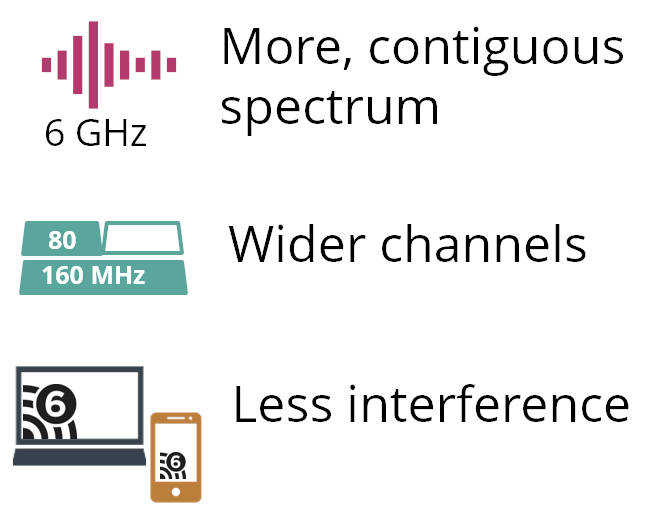US opens 6GHz band for Wi-Fi
by Steve BushThe Federal Communications Commission (FCC) has allocated its 6GHz spectrum to un-licensed use, opening 5.925 – 7.125GHz for uses such as Wi-Fi in the US.

Unlicenced users will share it with licensed utility, public safety and wireless back-haul microwave services, and to protect these there are rules including only allowing low-power indoor operations over the full 1.2GHz. Less restricted (‘standard power’) operation is available over 850MHz of the band. An automated frequency coordination system will prevent standard power access points from operating where they could cause interference to incumbent services.
The Wi-Fi Alliance, backed by members including Intel, NXP, On Semi, Philips, Broadcom and Qualcomm, has been lobbying for this spectrum and has immediately extended its ‘Wi-Fi Certified 6’ programme into 6GHz. ‘Wi-Fi 6E’ will be the branding for Wi-Fi 6 devices operating at 6GHz – projected to be available early in 2021.
“The additional spectrum addresses Wi-Fi’s spectrum shortage by bringing nearly six times the total capacity in both 2.4 and 5GHz, seven contiguous 160MHz channels, and less interference from legacy Wi-Fi devices,” according to the Alliance. “This translates to multigigabit Wi-Fi speeds and more devices performing optimally on a Wi-Fi network at once.”
The ‘6’ in ‘Wi-Fi 6’ is a coincidence.
Wi-Fi Alliance branding used to follow IEEE specification numbers – ‘Wi-Fi Certified ac’ products were compliant to IEEE 802.11ac, for example. It then altered its nomenclature, inventing Wi-Fi Certified 4, 5 and 6 brands for products compliant to 802.11n, ac and ax respectively.
Wi-Fi 6 features:
- Orthogonal frequency division multiple access (OFDMA)
- Multi-user multiple-input multiple-output (MU-MIMO)
- 160MHz channels
- Target wake time (TWT) to improve battery life
- 1024 quadrature amplitude modulation mode (1024-QAM)
- Transmit beam-forming
Wi-Fi Alliance bands stretch from sub-GHz (~750-950MHz) ‘Wi-Fi HaLow’ for long-range (~1km) narrow-band OFDM IoT comms, up to 60Ghz ‘WiGig’ for short-range multi-Gbit/s data transfer. It more usual international bands are around 2.4 and 5GHz.